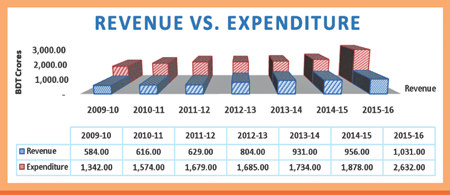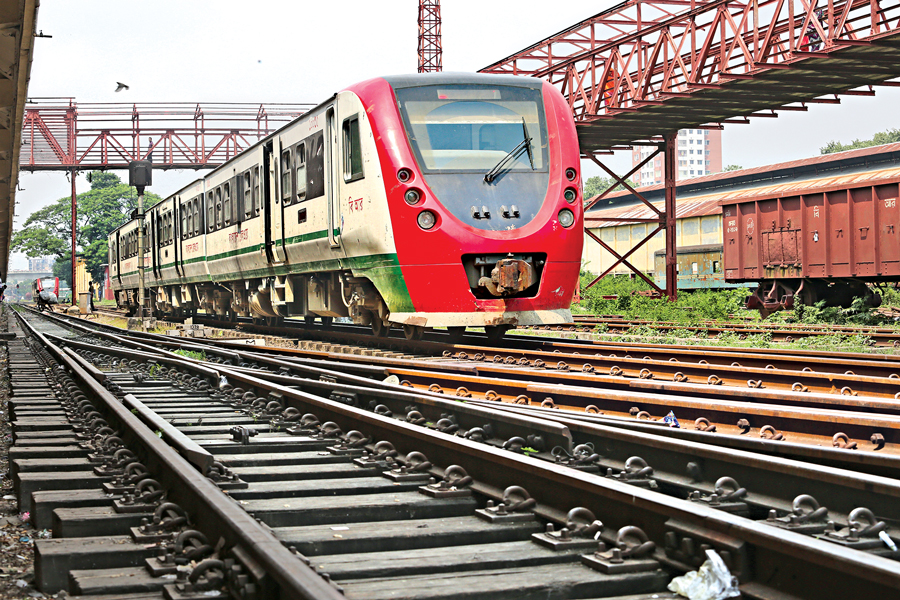 Even a few years back, the first question that came to mind before planning to travel by rail in Bangladesh was whether the train is ever on time! That is general perception people hold about rail of Bangladesh. The way railroads shaped the modern world and brought about economic prosperity across the globe is merely revolutionary. By connecting vast wilderness like Siberia or American West with industrial heartlands, it helped consolidate nations into more cohesive entities.
Even a few years back, the first question that came to mind before planning to travel by rail in Bangladesh was whether the train is ever on time! That is general perception people hold about rail of Bangladesh. The way railroads shaped the modern world and brought about economic prosperity across the globe is merely revolutionary. By connecting vast wilderness like Siberia or American West with industrial heartlands, it helped consolidate nations into more cohesive entities.
But for all its glories, the railway in Bangladesh that has played almost all the roles mentioned above here in Bangladesh has historically only been going downhill with the trend reversing in the last few years thanks to renewed interest from neighbours like India and China. Bangladesh started out with the modest figure of 2858.73 kilometres of tracks and 466 stations. In the first thirty years of existence, the operative track mileage had only dwindled.
 Sections after sections of branch lines were shut down after prolonged periods of losses and for lack of funding in maintaining and developing infrastructure and rolling stocks.
Sections after sections of branch lines were shut down after prolonged periods of losses and for lack of funding in maintaining and developing infrastructure and rolling stocks.
The reason is also not difficult to identify: the net revenue of operating a line is sensitive to the scale of operations, the cost declines with increased traffic and utilisation of resources. This is one of the reasons why many peripheral lines have never been profitable.

A simple graph shows how our railway has been performing over the last decade:
The most common answers to why our railway has not been as successful as that of India generally revolves around issues like corruption in its various forms as well as the structure of the organisation itself. Notwithstanding these challenges, the general public has always cherished the security and comfort that a train journey can provide. This is the reason why many people, particularly seniors, still prefer trains to other modes of transport.
Understanding this psyche, the government in recent years has tried to promote rail transport by procuring new coaches, locomotives, and Diesel Electric Multiple Units (DEMU), opening up old routes, and turning single-track sections into double-track ones for better utilisation. Even after all these investments, profit seems as elusive as ever!
The way such decisions are raised, approved, and vetted explains as to their ineffectiveness. One of the most prominent recent failures in railway's decision making was the procurement of DEMU. Costing more than 600 crore BDT, 20 sets of these rolling stocks were imported from China even though the Operations department of Bangladesh Railway raised the question as to whether these are fit for use in Bangladesh given our local conditions.
Only half of them are currently operational with the rest awaiting their fate in Pahartoli Workshop or various loco sheds around the country. Numerous mechanical-electrical problems and passenger complaints of low airflow inside plagued the commuter project so much so that within four years of introduction, these are now being considered white elephants of BR.
Newly-imported coaches from India and Indonesia were introduced in intercity express trains for better passenger service, but persistent problems with low manpower in maintenance sections proved to be source of another unfolding debacle as wash pits in busy terminals like Dhaka and Sylhet are not sufficiently manned to clean and maintain the rakes of the trains. The superficial washing and lack of fumigation makes the coaches dens of cockroaches and other bugs that are proving to be the major source of embarrassment to BR.
These are but a few examples of how piecemeal projects aimed at improving the performance are inevitably inadequate, even when the purpose is noble. The basic problem here seems to be a lack of coordination within the organisation. The pattern of introducing new services or rolling stock under political pressure without consideration of whether the current infrastructure can support the new burden is a recurring phenomenon in railway.
The fundamental problem in Bangladesh Railway is not that of infrastructure, at least not at this moment. The underlying concern is skilled workforce in a performance-oriented culture. The problem of incentives in public-service jobs cannot be overemphasised. Because public institutions run on the principle of service and not by profit motive, the people working here are hardly found to deliver the goods under a proper carrot-and-stick policy.
Ultimately, the involvement of politicians with public institutions is based on the election cycle, so the decisions made at their behest seldom result in sustainable outcomes for the facilities in the long term. With infrastructures that could not even support regular operations, many new trains have been inaugurated with consequent fall in average service quality across the board, many times by cannibalising existing trains and their resources.
This is exacerbated by reactive bureaucrats who are not particularly hard hit by the bad results of unsustainable development as do their colleagues at the lower rungs. Employees like train guards, and lockmasters or train-drivers who face angry passengers directly during incidents like electricity blackouts in trains, locomotive failures or derailment do not get to voice their expert opinions regarding the best possible ways to deal with issues like that.
Even after all this, success stories are there. Syedpur Carriage Workshop has managed to out-turn above the targeted number of rolling stocks for Eid and other festivities even as it has been reeling from the shortage of manpower for a long time. Similarly, the only fully fledged locomotive workshop in Parbatipur, the Central Locomotive Works, has also managed to perform impressively under constraints like shortage of supplies and clutter.
These are results of dynamic leadership that goes an extra mile by the sheer willpower of everyone involved, from their chiefs to the fitters. It is easy to see why they get to succeed while facing the same constraints that their on-field comrades do: there is always a sense of urgency where there are tangible targets, and the people involved understand clearly how each other's work are completely interdependent regardless of their relative positions.
What BR requires is a replication of that success elsewhere. But replicating these successes is not easy. Two particular issues differentiate standing institutions like those mentioned above and normal field jobs on the tracks: the influence of Unions on lower-level employees with poor class relations between ranks as well as the lack of standing committees for regular functions that requires inter-departmental cooperation such as maintenance.
Unions hold a strong influence over the current employees in the Railway, but the persistence of partisan politics over the last two decades has hurt more than helped in consolidation of them as a force for good. Given the British pedigree of BR, the relation between upper and lower ranks can be characterised as almost a colonial aristocracy where both groups view each other with suspicion. These age-old negative legacies are holding BR back.
In CLW or Syedpur, close working relationships between engineers and technicians as well as labourers create a symbiosis that helps in overtaking targets with less than required manpower and resources, while the absence of such recognition of each other's relative importance in field-level jobs makes it all the more difficult to establish a performance-based culture where the leaders need to care about those below as a matter of course.
Field jobs like those in engineering department which maintains physical infrastructure like tracks and bridges are particularly difficult and even dangerous in conditions prevailing in Bangladesh. The way job performance is measured is not ideal and the lack of discipline in rank and file only serves to compound problems in forming deep bonds and partnership between officers and their subordinates.
Unless these issues are dealt with in a sweeping reform, the increasing quantity of piecemeal projects for gradual improvement may not lead to a qualitative change in the way the organisation carries itself and presents itself to its customers and only replicate the same age-old pattern of disappointment after inducing high hopes for the future. But measures to manage these challenges will take a long time to have any tangible effects, because old habits die hard.
For the time being, given the fact that cost overshooting is the principal problem holding Bangladesh Railway back, the widespread adoption of e-Tender system must become a priority for all procurement as it ensures transparency, prevents collusion between bidders and officials, and saves a lot of money that otherwise would have ended up in the pockets of unscrupulous businessmen and corrupt officials who rig the bids.
The historical determinant of the success of any railways is the combination of maximum capacity utilisation and scale of coverage which can counter the large size of the outlays required to maintain the rolling stocks and other infrastructures. Given the strategic position of Bangladesh between China and India, we can in principle become a transportation hub for trade route connecting South-East Asia and China with Indian Subcontinent. Freight operations must be the ultimate priority due to high margins and the strategic advantage.
Another potential area of improvement for revenue can be yield management in the vein of airlines, with differential rates for the same seat being sold to passengers with varying time constraints, e.g. a weekend traveller who is buying a ticket on Thursday evening to visit his village as opposed to a tourist planning the trip 15 days ahead.
All that being said, given the example of India and other low-income densely populated countries with successful railways, there are still hopes that Bangladesh Railway can position itself as the penultimate name in the choice of transport for millions of citizens of this country.
Muhammad Nazmul Khan is rail enthusiast currently working as a finance executive at local FMCG company. [email protected]
© 2024 - All Rights with The Financial Express
